Testing medical protective gear is the perfect job for robots–but not without the help of humans.
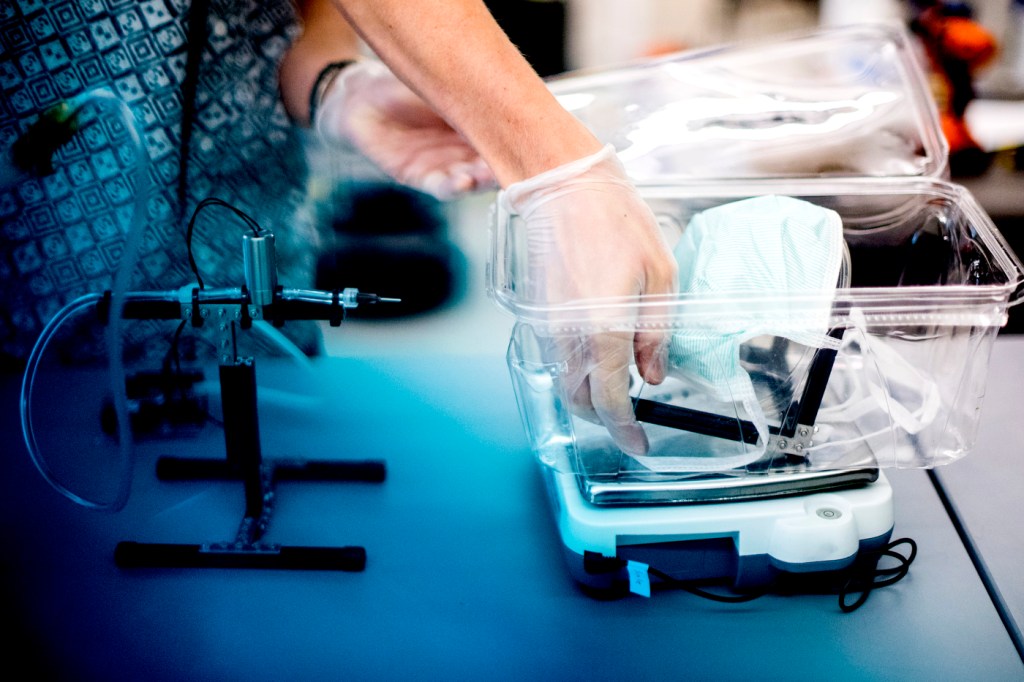
Several months into the pandemic, there’s still a high demand for surgical masks, gowns, and other types of personal protective equipment in the United States. That’s partly because of the stress the COVID-19 crisis has put on the healthcare supply chain to produce and distribute the protective gear.
One reason the process has bottlenecked is that, unlike homemade or commercial masks, the face masks worn by healthcare staff must undergo a specific set of tests to ensure they will be safe for hospital personnel.
But those tests are difficult to perform, requiring specialized facilities that are only available at some laboratories in the U.S. And because of the logistics of sending materials to an external facility during a pandemic, that kind of testing can take more than a few weeks to complete, resulting in slow distribution times for manufacturers.
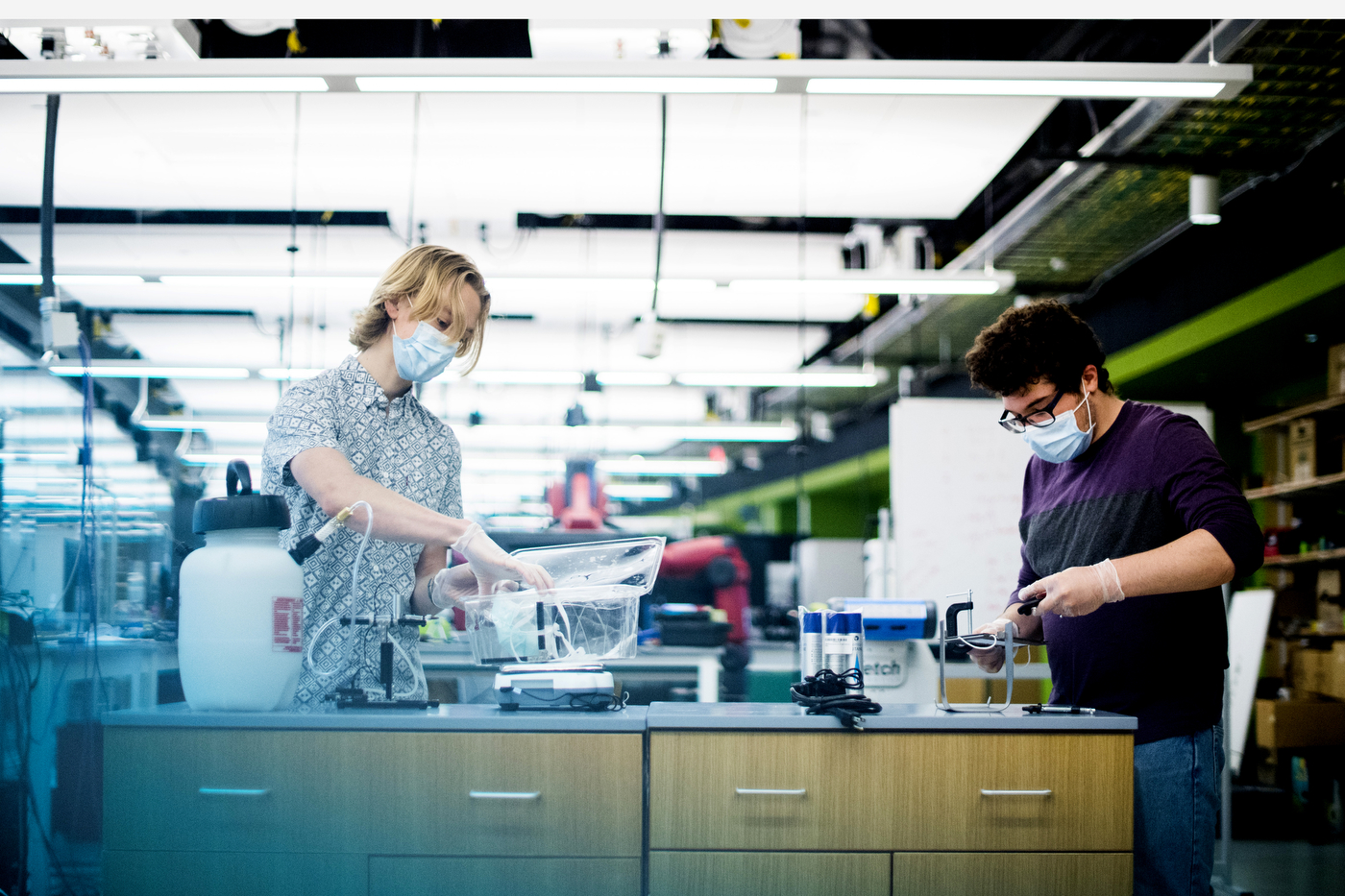
To overcome that challenge, Taskin Padir, an associate professor of electrical and computer engineering, mobilized his team early in the pandemic to begin creating robotic technology that can assist manufacturing workers and eliminate the need to send masks to outside labs for testing.
Padir is building a system that integrates robotic components and machine learning to speed up the testing, while using the intelligence of a human, who can supervise and assist the robot. The system, he says, includes sensors that would help a robotic arm handle different objects quickly and efficiently.
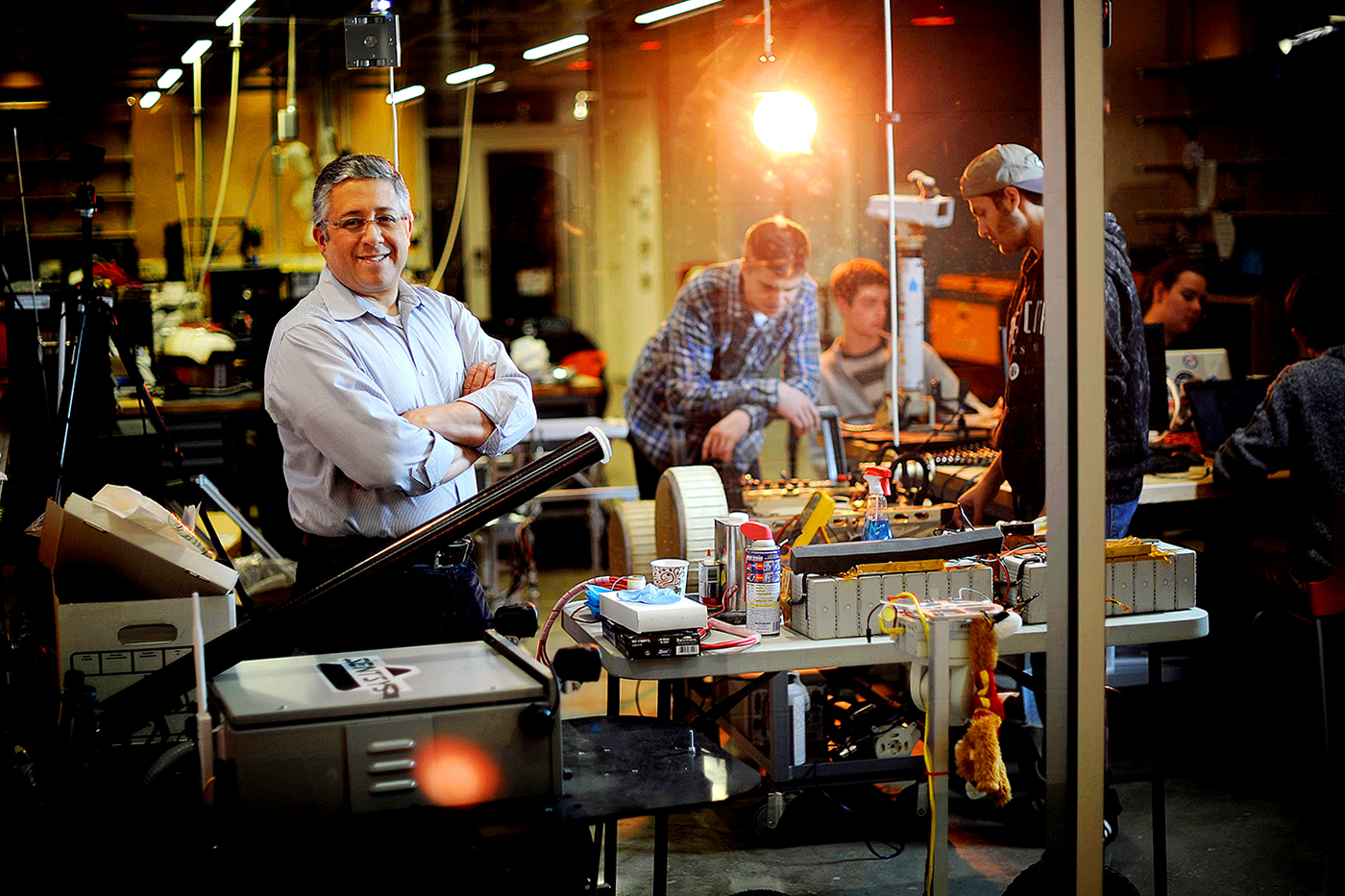
Taskin Padir is an associate professor in the College of Engineering. Photo by Matthew Modoono/Northeastern University
Recently, he was selected by the Advanced Robotics for Manufacturing Institute to receive funding from the U.S. Department of Defense to do just that. The plan is to help manage the current and future pandemics.
“I don’t have to ship out my products to a national lab and wait for the results to come back for a couple months,” says Padir, who has also enlisted the help Ennio Mingolla, a professor of communication sciences and disorders, and Deniz Erdogmus, a professor of electrical and computer engineering for the project.
In May, Padir began discussions with Massachusetts General Hospital, when the hospital was analyzing different contingency plans to prepare for potential shortages in surgical masks. They were considering producing their own masks, Padir says, and needed to ensure their compliance to the guidelines established by the U.S. Food and Drug Administration.
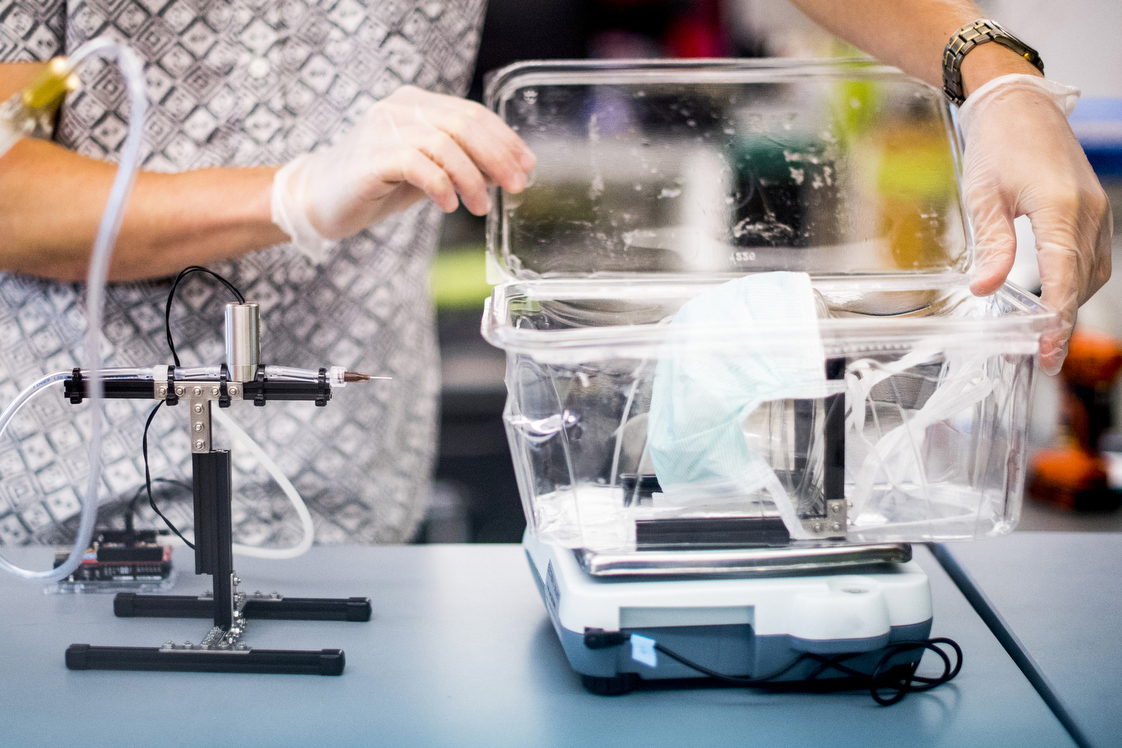
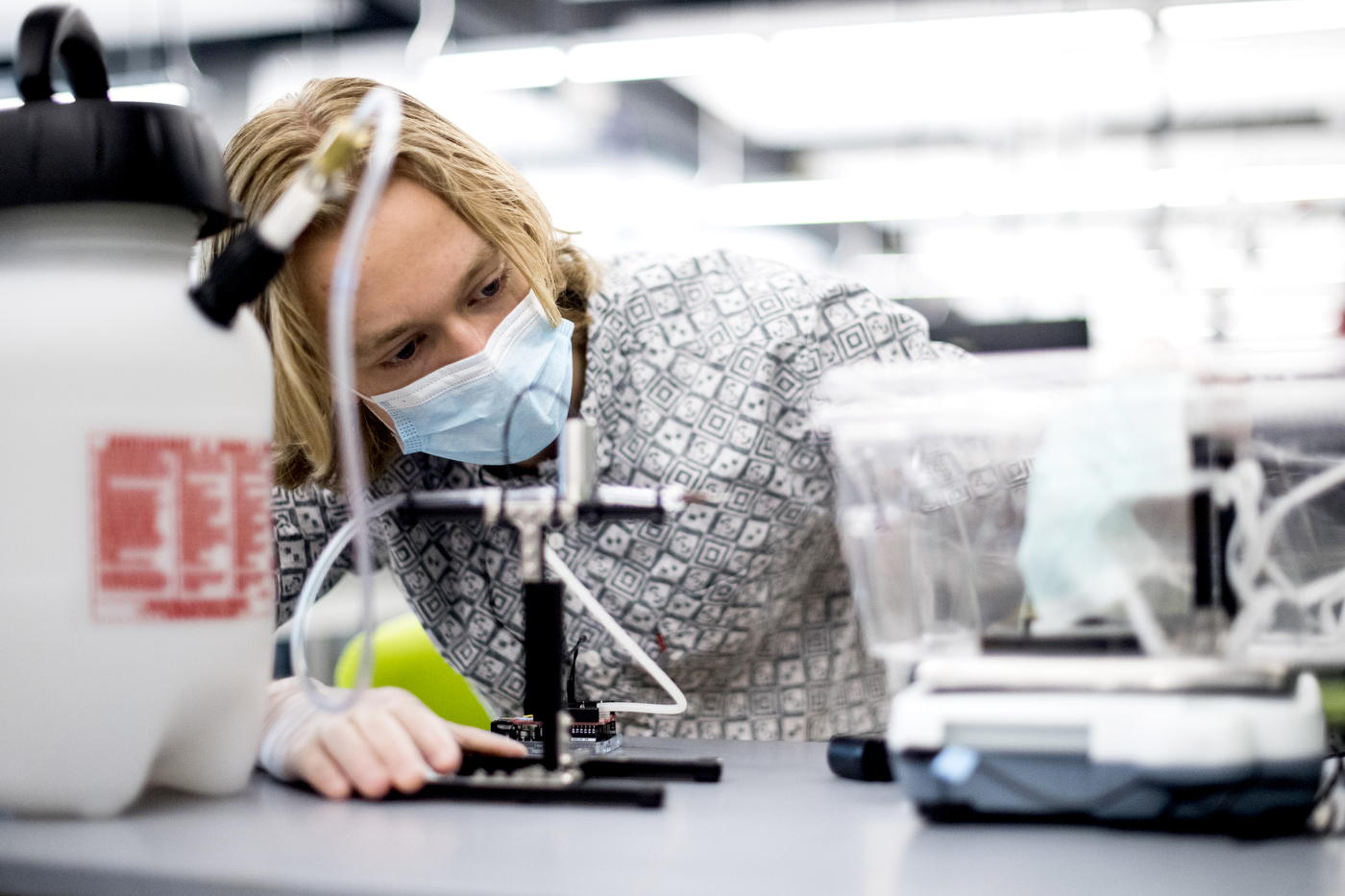

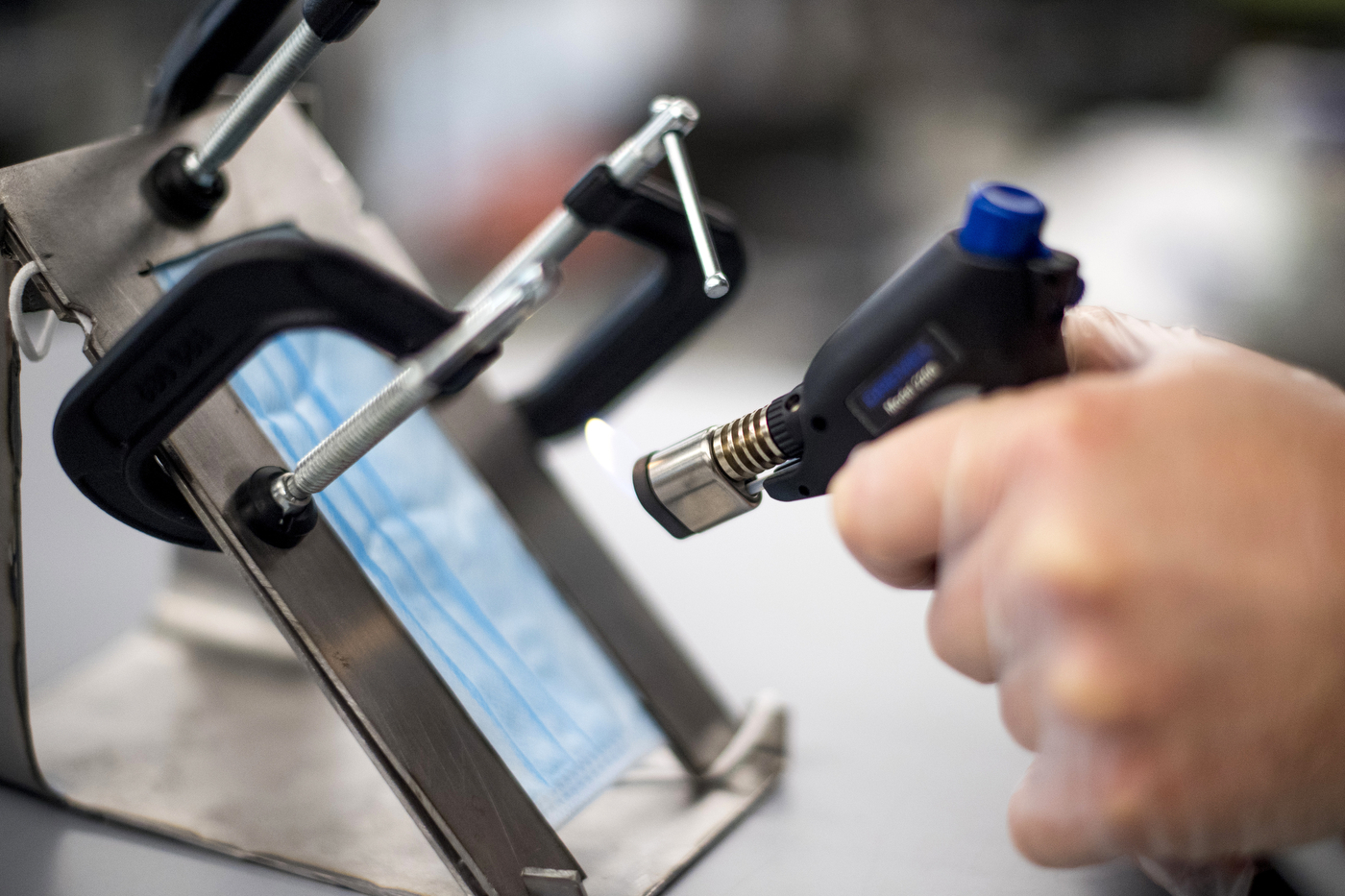
In May, he helped the hospital build a testbed to put their own surgical masks to the test. That’s when he enlisted the help of Walter Reuss and Jacob Landgrebe, two electrical engineering students on co-op in Padir’s team. They helped analyze the specific ways in which surgical masks and gowns undergo testing for medical grade validation.
The fabrics used in masks need to pass different standardized tests to verify how easily they burn, and how effective the garment is at shielding the wearer from splashed fluids, such as blood.
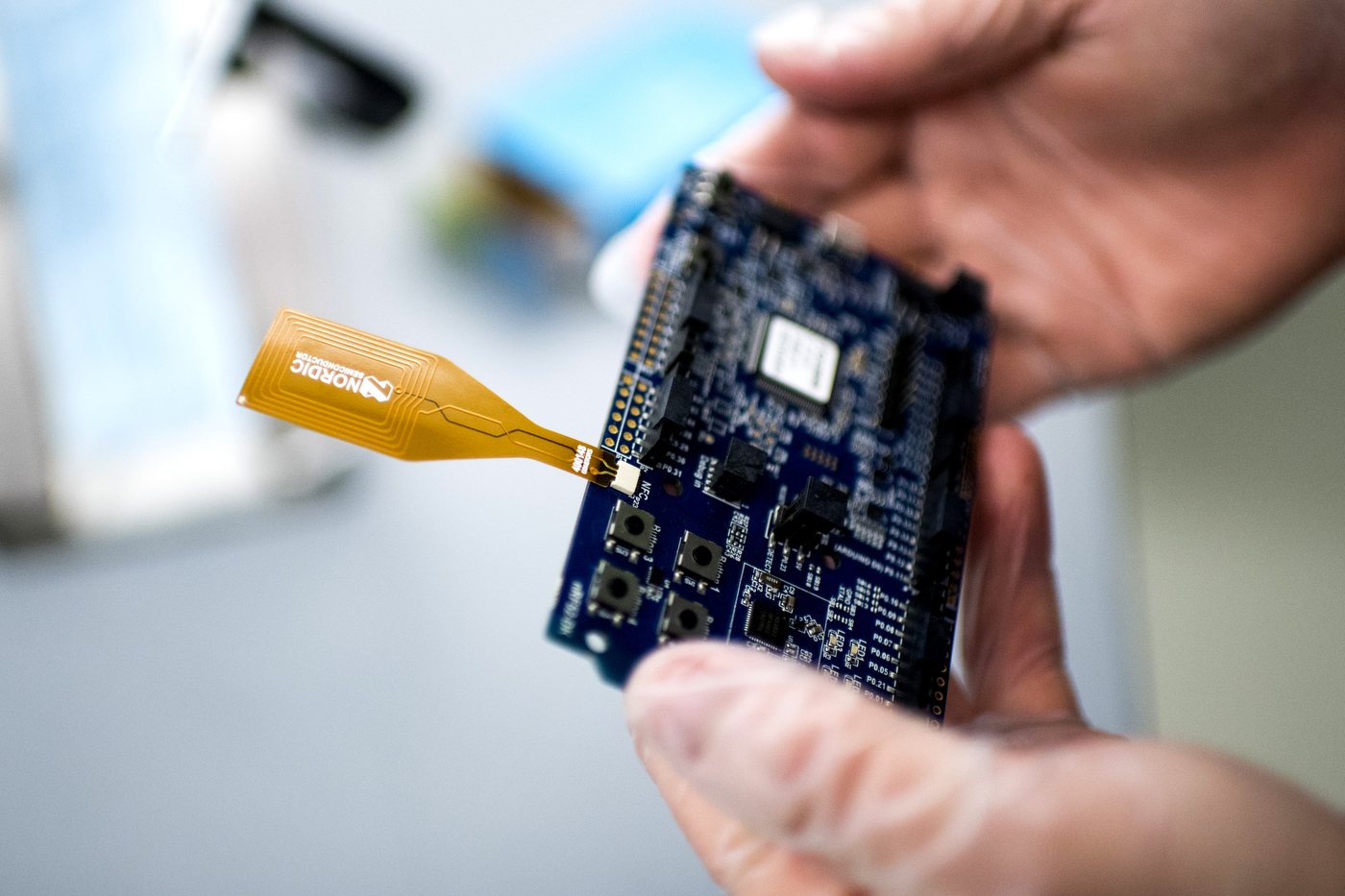
Northeastern students Walter Reuss and Jacob Landgrebe develop testbeds for characterization of surgical masks. Photo by Matthew Modoono/Northeastern University
In the lab, Reuss and Landgrebe set masks on fire, observing how long it took for the material to burn completely. To test for fluid-blocking capacity, they shot the materials with synthetic blood.
Those early experiments, Padir says, were instrumental in designing the robotic system he is now building.
“I wouldn’t have this project to talk about, because they were the champions early on when we learned about the whole process,” he says. “Now, we’re trying to bring robotics and automation to this process, so that they can be integrated into volumes of manufacturing.”
Padir’s project is now a partnership with Merrow Manufacturing, a fabric producer in Fall River, Massachusetts. When the company pivoted to produce textiles for personal protective equipment and became the largest source of such materials in the U.S., Padir decided to reach out to its CEO, Charlie Merrow. Later, Boston Engineering Corporation in Waltham, Massachusetts, also joined the team.
Given his experience integrating robotics into the workplace in different industries, Padir believes the laborious and methodical process of testing and validating mask materials is the perfect job for a robot. Still, he says, handling the materials used in surgical masks and gowns can also be a robot’s nightmare.
Unlike humans, robots lack the ability to fully sense the things they touch. Holding onto materials or objects that change form, such as fabric, can be tough.
“When I touch a garment, if it starts slipping, I can feel it, and I can take action,” Padir says. “But robots don’t have that capability yet—we don’t have the technology available to that level of precision.”
The system Padir is building with Merrow is a type of robotic arm that, instead of handling the fabric directly, can interact with test gadgets used by human beings. After placing the test piece in a frame specifically designed for the robot to handle, the human can step away and let the system conduct the tests automatically.
Padir also has a grand vision of automating the entire testing process from beginning to end, from putting the raw materials in, to getting a piece of gear, such as a mask, out—with the sewing, the welding, and the cutting all done automatically.
A robotic system that can begin handling materials as they undergo testing is one link in the chain of that vision.
“This will also help us to understand the entire manufacturing processes,” Padir says, “and perhaps reimagine the future of PPE manufacturing with automated systems.”
For media inquiries, please contact Shannon Nargi at s.nargi@northeastern.edu or 617-373-5718.




